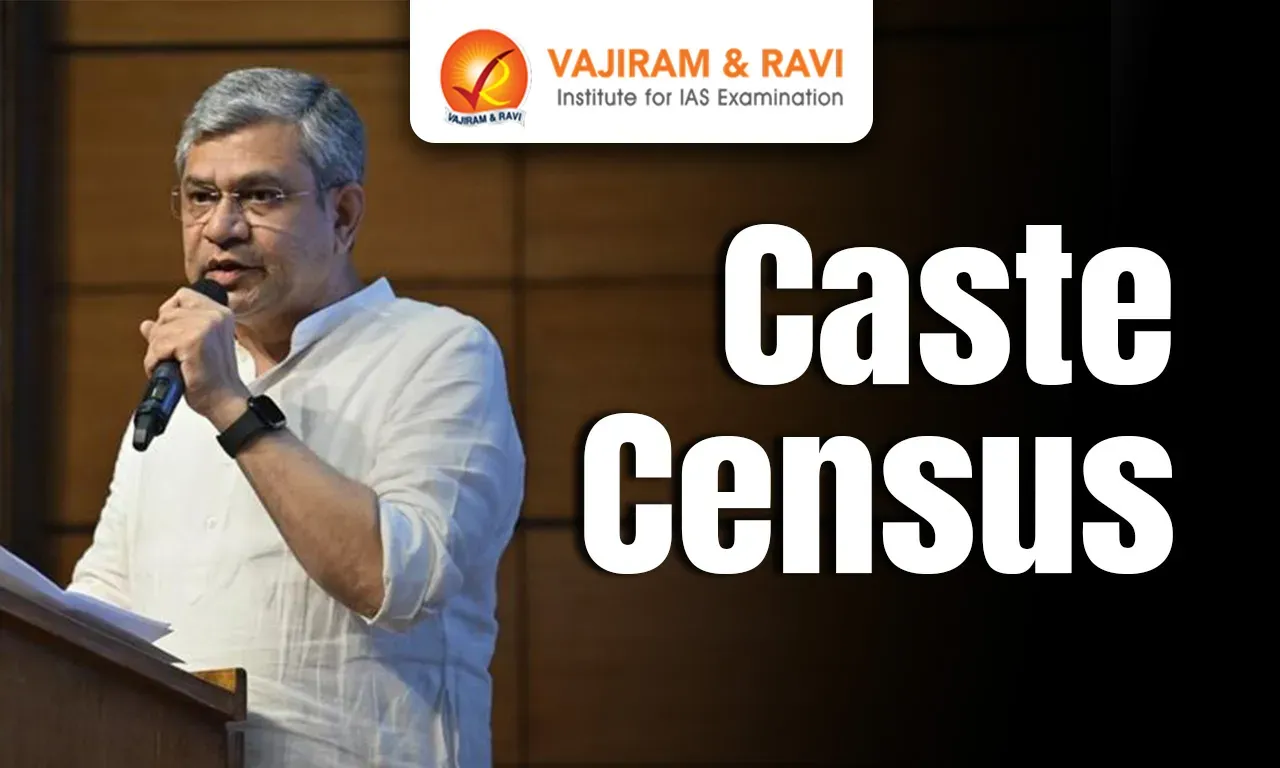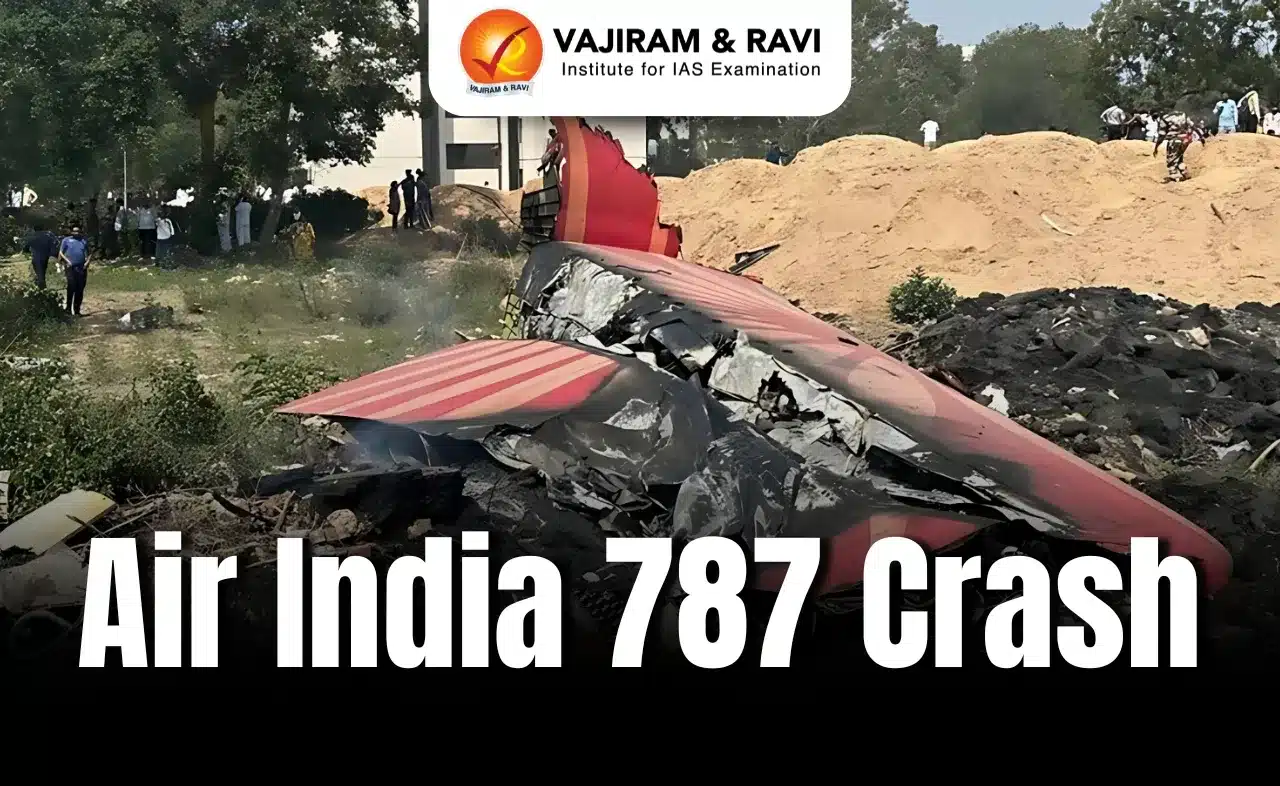What’s in Today’s Article?
- Caste Census Latest News
- Census in India
- History and Status of Caste Census
- Key Highlights on Caste Census Decision
- What Happens Now
- Caste Census FAQs
Caste Census Latest News
- The Cabinet Committee on Political Affairs has approved the inclusion of caste data in the upcoming population census. The 2021 Census was postponed due to COVID-19 and remains indefinitely delayed.
- This decision reignites the ongoing debate over the role of caste-based enumeration in governance, policymaking, and politics.
Census in India
- Overview of Population Census
- The Population Census offers essential statistics on human resources, demographics, culture, and the economic structure at all administrative levels.
- The first census in India began in 1872 (non-synchronous), while the first synchronous census was held in 1881 under British rule by W.C. Plowden.
- It is conducted every 10 years by the Office of the Registrar General and Census Commissioner under the Ministry of Home Affairs.
- Legal and Constitutional Basis
- Census is a Union subject under Entry 69, Union List, Seventh Schedule of the Indian Constitution.
- It is governed by the Census Act, 1948.
History and Status of Caste Census
- Caste data was collected during British India censuses from 1881 to 1931.
- Post-1951, caste enumeration was discontinued, except for Scheduled Castes (SCs) and Scheduled Tribes (STs).
- In 1961, the Centre recommended that States conduct their own OBC surveys, since central OBC reservations did not exist then.
- Though census is a central subject, the Collection of Statistics Act, 2008 enables states and local bodies to collect data — as done by Karnataka (2015) and Bihar (2023).
Socio-Economic and Caste Census (SECC)
- The last attempt at caste data collection at a national level took place in 2011 through the SECC, intended to assess the socio-economic condition of households alongside caste information.
- Ministry of Rural Development oversaw the rural survey.
- Ministry of Housing & Urban Poverty Alleviation handled urban areas.
- Only the socio-economic data was published in 2016; the caste data was withheld.
- The raw caste data was handed over to the Ministry of Social Justice and Empowerment, which constituted an Expert Group led by Arvind Panagariya for classification.
- It is unclear if the group submitted its report—no report was ever made public.
Learnings from the SECC (2011)
- The SECC recorded 46 lakh caste names due to its open-ended format, compared to 4,147 castes in 1931.
- People wrote sub-caste names or surnames (e.g., Gupta, Agarwal), causing data inflation.
- This time, a standardised code directory will be used to avoid such inconsistencies.
Key Highlights on Caste Census Decision
- Digital Mode & Drop-Down Caste Directory
- For the first time, the Census will be conducted in digital mode, using a mobile app.
- A new “Other” column with a drop-down caste code directory will be included beside the SC/ST column.
- Software is currently undergoing testing to ensure smooth implementation.
- Directory Development & Testing
- The Central OBC list (2,650 communities), SC list (1,170), and ST list (890) will be merged with State OBC lists to form a comprehensive codebook.
- A pre-test will be conducted to iron out glitches before the actual enumeration.
- Major Policy Shift After Decades
- The CCPA’s approval to include caste data in the upcoming census marks the first comprehensive caste enumeration since 1931 (excluding SC/ST data).
- Historical Context of Caste Enumeration
- Caste data was excluded from post-Independence censuses (1951–2011), except for SC/ST figures.
- The last full caste census was in 1931, with unpublished data from 1941.
- Reliance on Estimates So Far
- In the absence of official data, estimates like the Mandal Commission’s 52% OBC figure have guided policy and electoral decisions.
- Bureaucratic and Data Classification Hurdles
- Accurate caste data collection is hampered by overlapping caste names, classification ambiguities, and lack of clarity on inter-caste or migrant identities.
- Inconsistent State-Level OBC Lists
- Different states have varying OBC lists and sub-categories like Most Backward Classes, complicating efforts to create a standardized national caste database.
- Renewed Debate on Governance and Representation
- The move revives the broader debate on how caste data should inform governance, social justice, and political representation in India.
What Happens Now
- About 30 lakh government officials will need retraining for the new digital format.
- The Census will occur in two phases:
- Phase 1: House listing & housing schedule (31 questions; already notified in 2020).
- Phase 2: Population enumeration (28 questions; tested in 2019, yet to be officially notified).
Significance for Delimitation & Women’s Reservation
- The new Census findings will be used to:
- Redraw Lok Sabha constituencies (delimitation).
- Implement 33% women’s reservation in Parliament and State Assemblies.
Caste Census FAQs
Q1. What is the Caste Census?
Ans. A detailed enumeration of caste data alongside population statistics to improve governance and social justice policy-making.
Q2. Why is the Caste Census important now?
Ans. It informs decisions on reservations, representation, and socio-economic planning based on current caste demographics.
Q3. When was the last full caste census held?
Ans. In 1931, with SECC 2011 being a partial and unpublished effort.
Q4. What is new in this caste census?
Ans. It will be digital with a standardized caste code directory to avoid data duplication.
Q5. How does it impact governance?
Ans. It helps in targeted policymaking, accurate delimitation, and implementing women’s and caste-based reservations.
Last updated on June, 2025
→ UPSC Notification 2025 was released on 22nd January 2025.
→ UPSC Prelims Result 2025 is out now for the CSE held on 25 May 2025.
→ UPSC Prelims Question Paper 2025 and Unofficial Prelims Answer Key 2025 are available now.
→ UPSC Calendar 2026 is released on 15th May, 2025.
→ The UPSC Vacancy 2025 were released 1129, out of which 979 were for UPSC CSE and remaining 150 are for UPSC IFoS.
→ UPSC Mains 2025 will be conducted on 22nd August 2025.
→ UPSC Prelims 2026 will be conducted on 24th May, 2026 & UPSC Mains 2026 will be conducted on 21st August 2026.
→ The UPSC Selection Process is of 3 stages-Prelims, Mains and Interview.
→ UPSC Result 2024 is released with latest UPSC Marksheet 2024. Check Now!
→ UPSC Toppers List 2024 is released now. Shakti Dubey is UPSC AIR 1 2024 Topper.
→ Also check Best IAS Coaching in Delhi






















